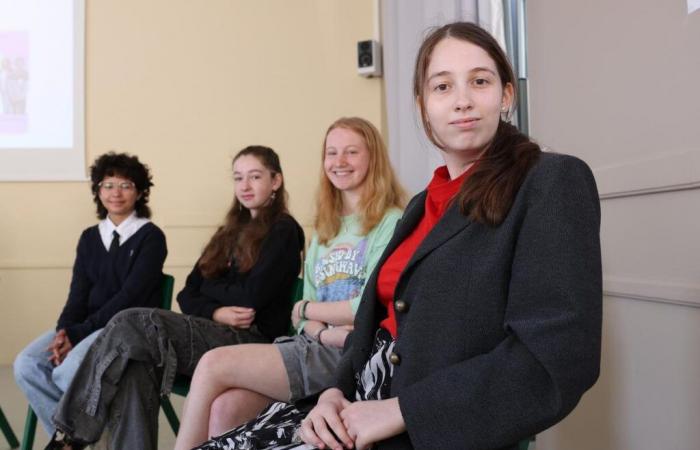
The editorial team advises you
“Last year, we took photos of all the insults written on the classroom tables and we made posters of them,” say Honorine and Eloïse, two other ambassadors. The weight of the words, the shock of the photos. She evokes this schoolboy whom she and her friends had to withdraw into the playground, to bend under the gratuitous mockery. “We suggested that he go and talk to the principal education advisor about it in his place; in the end, he managed to go alone. » All four share one thing in common: a very measured and thoughtful use of social networks, a sounding board for harassment.
These ambassadors are trained and all middle school students receive ten hours of lessons on the issue. Around them, a network of teachers, the CPE and the nurse, also trained. A device that is bearing fruit.
A graduated sanction
“As soon as a case is reported to us, we open a file and we distribute the students to see. If the harassment is proven, we impose a sanction, which is graduated according to the facts,” reports the CPE which emphasizes a point, little discussed. “Once the harassing students realize that they have done wrong, that they are breaking down, we must restore these children to their student posture. » “We have made this subject a priority and the national slogan 'your problem is my problem' is bearing fruit, appreciates Julien Ferrant, the principal. Student victims generally manage to talk about it to a friend, an ambassador or their family calls us. »
With one priority: “that it does not harm the academic career or ambition”, insists Thierry Claverie, who points out, like Julien Ferrant, the importance of developing language and speech to develop empathy.
A reference in Charente
For a year, Charente has had its school harassment representative. Hervé Njoo-Ekoulé, former CPE, is entirely dedicated to this. “We have gained enormously in responsiveness”, appreciates Thierry Claverie who adds that “30% of the situations reported are proven cases of harassment”. “65% of them occur between CM2 and 4e and it affects girls as much as boys”, notes Hervé Njoo-Ekoulé and “75% take place “in the school environment”. Contrary to popular belief, only “6% of incidents involve cyber-harassment”, even if networks often make things worse. Over the last school year, 124 situations were reported and handled in the department.





